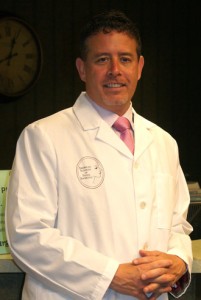Read Managing Patient Expectations Part 1
Managing patient expectations is a learned skill but one that you have to master in order to run a competitive and profitable cosmetic practice.
Be aware of is patients who are complaining about previous providers. It's a potential indicator that this client might be a difficult client to deal with.
Clearly if someone is continually bashing another doctor (provided that the didn't do something that caused obvious harm) and they're angry with that doctors and his staff, that's going to put me on guard.
Now, there are situations where a patient's anger is appropriate.
I have a patient right now, that for years, went to another provider, and when she came to me and told me that she's switching providers, I did become a little alarmed right out of the bat. But once I got to know her my misgivings were removed. She had been going to this other physician for years and years and years, and she was upset with him because of the treatment she received for the previous several injections... but she attributed it to the front desk since the clinic had became very busy and impersonal. So I think you have to look at each patient individually. She was legitimate with her complaint and we have a great relationship but there are others.. If a patient is very, very angry, and constantly bashing a former provider and complaining about results you need to be aware, because you could be the next one on their hit list.
I think it's important to take as much time as you can so that you're comfortable and the client's comfortable. To simply make a decision that you're not going to treat that patient and you are now wasting your time, sitting in that room with the patient is the bad approach because then the patient's gonna be angry.
As far as I know, I've never sent anybody out of the office angry because I declined the treatment.
I really make the decision very rapidly as to whether I'm going to treat them or not. I think with time you develop that. I know within the first minute or so if I'm going to treat or won't, but I spend the same amount of time sometimes for both of them - the person I'm going to treat versus the person I'm not going to treat - because to make that person angry is not what I want to do for a number of obvious reasons.
Often, I can convert them into doing something else that's realistic or telling their friends that's I'm genuine person. I listen to exactly what they want and I try to understand what they want to have done. Sometimes it's a very small,small correction they're asking for and I don't think I can alleviate it... a very tiny line that I can barely see. So I listen to them, I give them a mirror, I have them point it to me. I try to totally understand what they are pointing up. And most of the time, I can see what it is they want me to correct.
However, if I don't think I can correct it and I think that it's unrealistic, I don't tell them: "That's unrealistic", I explain to them the limitations of the product and the scientific discussion. This product is made for this procedure, not unfortunately for what you want to have done and what you want to have done, I'm unable to correct this in the way that you're asking for.
Some patien'ts don't accept that and will respond with.. "But you're a plastic surgeon or you're an aesthetic physician, this is what you do." So then you have to educate them more with, "Unfortunately we don't have all the tools available". (The 'no magic wand' defense.)
So, even if you've decided that you're not going to treat a specific patient, I think it's really important to spend time with them, see what they want you to do and have them leave happy.
 Part 1 of our interview with Marc Scheiner MD, an Allergan Certified Botox Cosmetic Trainer and the physician instructor on Botox Training MD.
Part 1 of our interview with Marc Scheiner MD, an Allergan Certified Botox Cosmetic Trainer and the physician instructor on Botox Training MD.








